Identifying long-term stable refugia for relict plant species in East Asia
- PMID: 30367062
- PMCID: PMC6203703
- DOI: 10.1038/s41467-018-06837-3
Identifying long-term stable refugia for relict plant species in East Asia
Erratum in
-
Author Correction: Identifying long-term stable refugia for relict plant species in East Asia.Nat Commun. 2018 Dec 4;9(1):5241. doi: 10.1038/s41467-018-07727-4. Nat Commun. 2018. PMID: 30514890 Free PMC article.
Abstract
Today East Asia harbors many "relict" plant species whose ranges were much larger during the Paleogene-Neogene and earlier. The ecological and climatic conditions suitable for these relict species have not been identified. Here, we map the abundance and distribution patterns of relict species, showing high abundance in the humid subtropical/warm-temperate forest regions. We further use Ecological Niche Modeling to show that these patterns align with maps of climate refugia, and we predict species' chances of persistence given the future climatic changes expected for East Asia. By 2070, potentially suitable areas with high richness of relict species will decrease, although the areas as a whole will probably expand. We identify areas in southwestern China and northern Vietnam as long-term climatically stable refugia likely to preserve ancient lineages, highlighting areas that could be prioritized for conservation of such species.
Conflict of interest statement
The authors declare no competing interests.
Figures
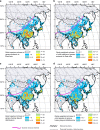
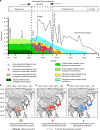
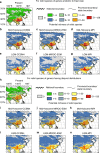
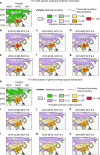
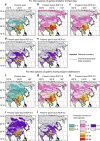

References
-
- Ehlers. J, Gibbard PL. The extent and chronology of cenozoic global glaciation. Quat. Int. 2007;164–165:6–20. doi: 10.1016/j.quaint.2006.10.008. - DOI
-
- Kryshtofovich AN. Evolution of the tertiary flora in Asia. New Phytol. 1929;28:303–312. doi: 10.1111/j.1469-8137.1929.tb06761.x. - DOI
-
- Qian H. A comparison of generic endemism of vascular plants between East Asia and North America. Int. J. Plant Sci. 2001;162:191–199. doi: 10.1086/317909. - DOI
-
- Milne RI, Abbott RJ. The origin and evolution of tertiary relict floras. Adv. Bot. Res. 2002;38:281–314. doi: 10.1016/S0065-2296(02)38033-9. - DOI
-
- Manchester SR, Chen ZD, Lu AM, Uemura K. Eastern Asian endemic seed plant genera and their paleogeographic history throughout the Northern Hemisphere. J. Syst. Evol. 2009;47:1–42. doi: 10.1111/j.1759-6831.2009.00001.x. - DOI
Publication types
LinkOut - more resources
Full Text Sources

